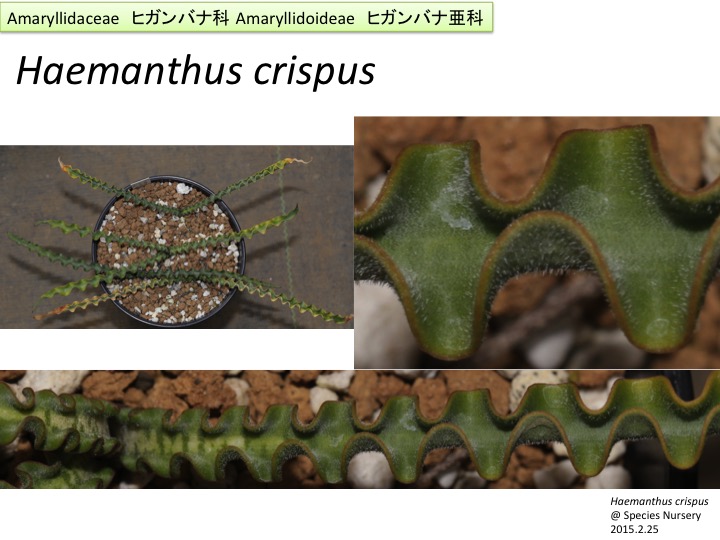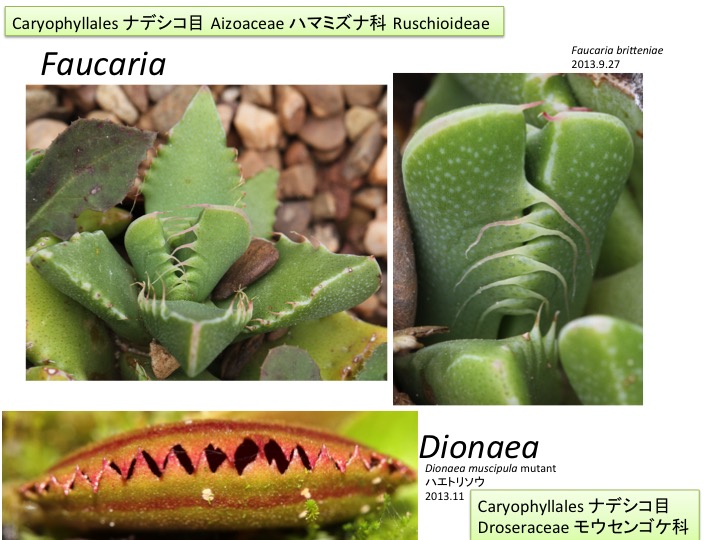Haemanthus crispsusの葉縁は波打つ。2つの可能性が考えられる。一つは、葉の場所によって規則的に成長方向が異なっており、自律的に葉縁が波状に成長するという仮説である。もう一つは、前の葉が波打っているので、葉原基の段階で、前の葉の窪みにあたる部分が、次に出る葉に圧力を与えて、同じように窪む、結果として波状になるという仮説である。後者の例として、カモジグサでは、葉身と葉鞘のつなぎ目がでっぱっており、このでっぱりが、次の葉の葉身部分にあたって、葉身の途中がくびれる(熊澤 1979)。Haemanthus crispsusの場合、若い葉原基を観察したり、実験的に若い葉原基を他の葉原基から引き離して成長させてみたりするとどちらが正しいのかわかるかもしれない。
Both leaf margins of Haemanthus crispus are waved. There are two possibilities of the waving. One is autonomous waving with regular changes of growth activity at the margins. The other is that the waving is passive and the waves of a previous leaf make pressure to a next primordium to form new waves. An example similar to the latter pattern is observed in Elymus tsukushiensis var. transiens. A part of leaves is contracted in E. tsukushiensis var. transiens, since the junction between a leaf blade and a leaf sheath presses a middle part of one upper leaf primordium (Kumazawa 1979). Observation of early leaf primordia of Haemanthus crispus will give an answer.
他の器官からの影響で形態が変化する可能性のある例として、Faucariaとハエトリソウの葉がある。Faucariaの葉縁突起は対生の2枚の葉、ハエトリソウの葉縁の棘は1枚の左右の葉縁が相互作用しながら形成されるように見える。
Another possible examples in which interactions to other organs may result in morphogenesis are found in Faucaria and Dionaea. Protrusions of opposite leaves in Faucaria and spines of right and left margins of a leaf of Dionae are interdigitated.


